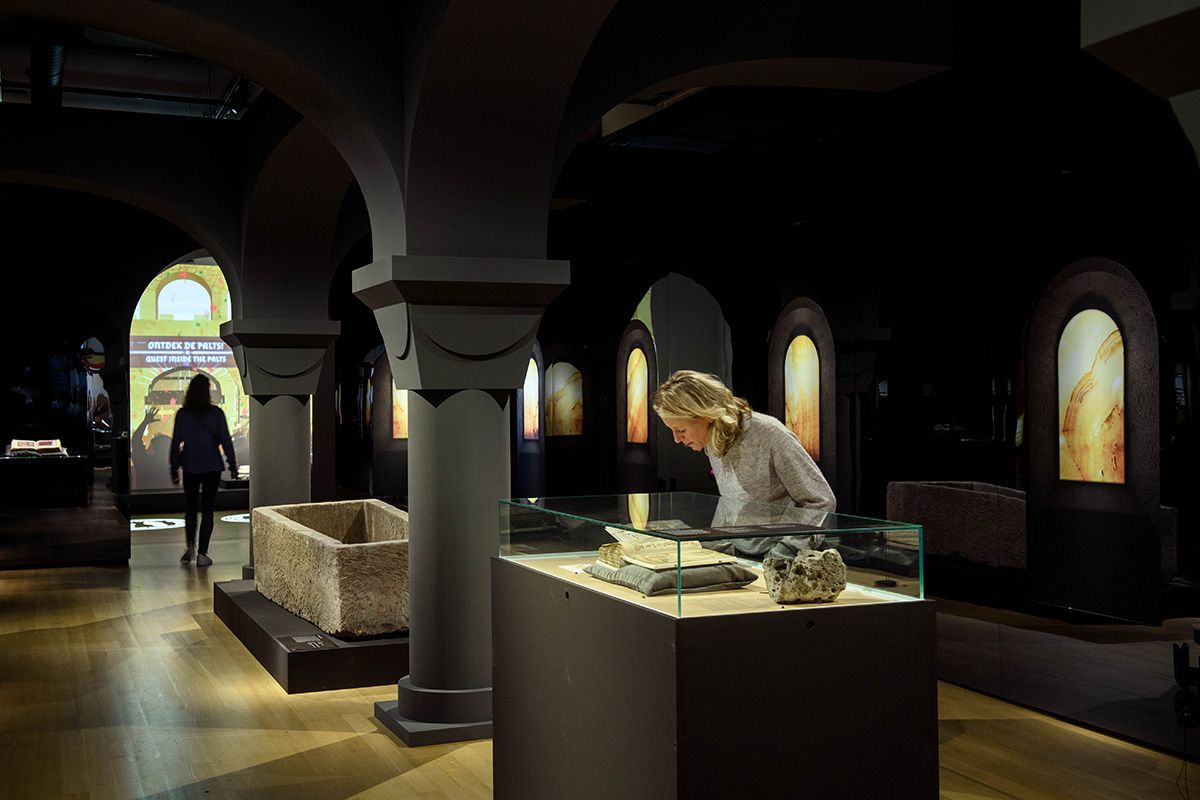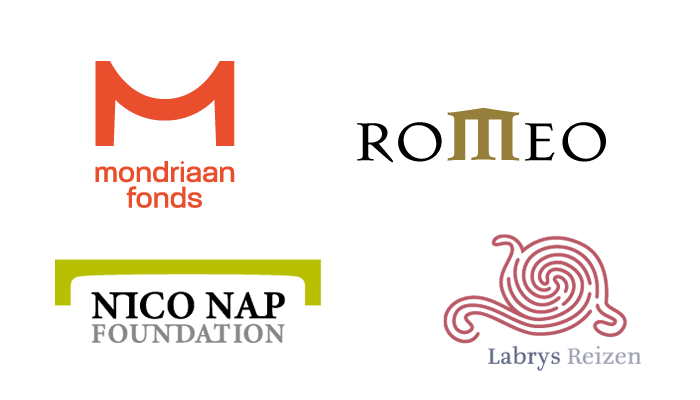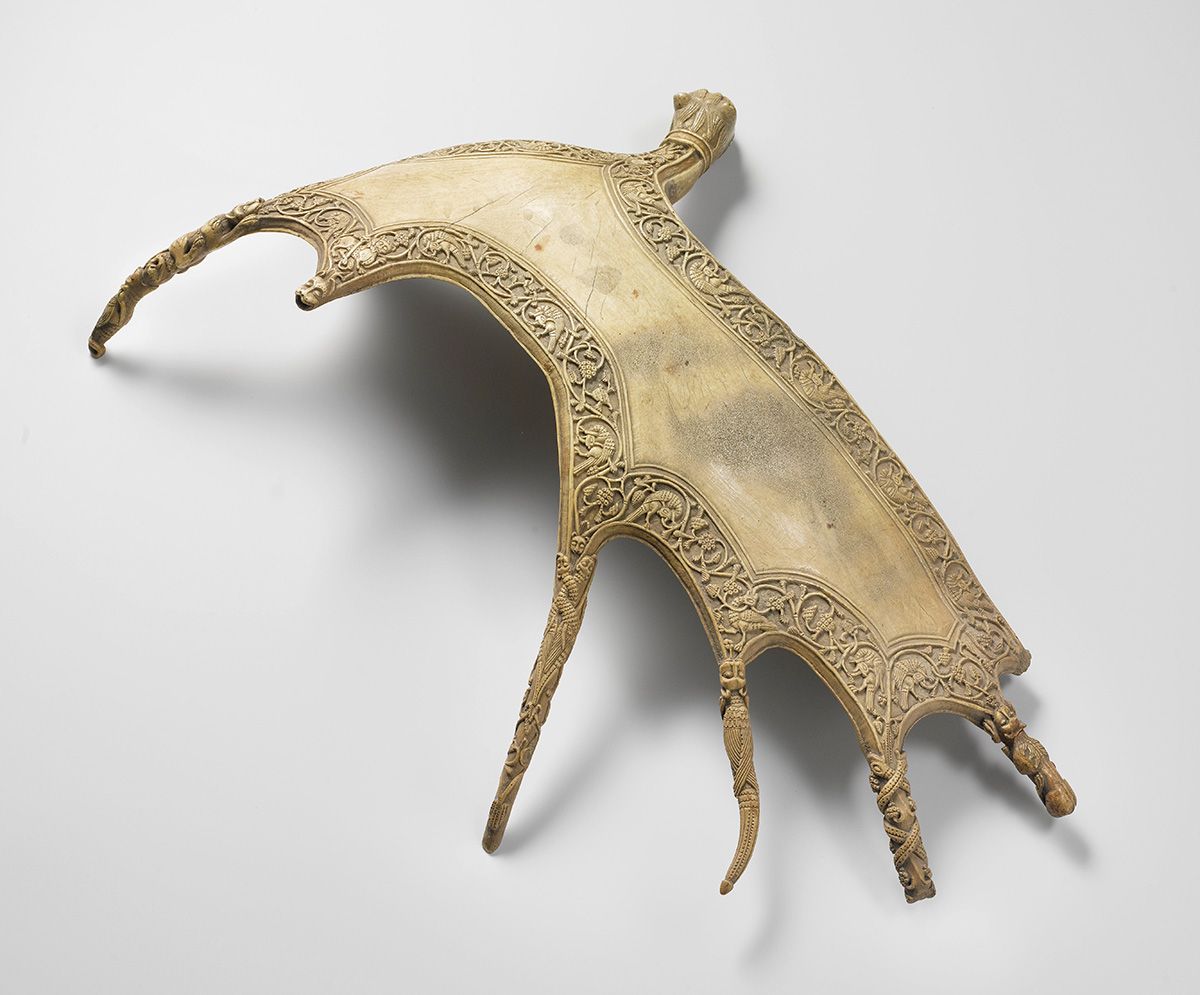Major exhibition with (inter)national masterpieces
on display until 17 March 2024
The Netherlands in the middle of the Middle Ages
This major exhibition takes you on a colourful journey in time through the middle of the Middle Ages: the period 900-1100. The year 1000 brings you close to the people of the time and their ideas about the world. The exhibition passes through their villages, stops by at the imperial residence in Nijmegen, and visits Utrecht Cathedral and the treasuries of Maastricht. You will also explore Byzantium and the Rome of one thousand years ago.
From silver Viking drinking-horns to ancient chess pieces
The exhibition presents more than four hundred objects from all over the Netherlands and far beyond. They include almost every important archaeological artefact from the period 900-1100 that has been found in the Netherlands. Among the highlights are a Viking drinking-horn from the Basilica of Our Lady in Maastricht and the famous Egmond Gospels from the Royal Library of the Netherlands. The display also features swords, ship timbers, golden jewellery (including the recent treasure from Hoogwoud), coin hoards, the pectoral cross of St Servatius, the oldest chess pieces in the Netherlands, and a wooden ladder from a well.
An era of great change
The middle of the Middle Ages, the period 900-1100, can seem like a black hole in history; centuries when nothing happened. But for the region that is now the Netherlands, it was actually a time of great transformation in the climate, landscape, buildings, language and society. The centuries between 900 and 1100 saw the emergence of what is now recognisable as ‘the Netherlands’, with dykes surrounding reclaimed land, a manor after every river bend, and church towers on the horizon.
Newcomers in the Netherlands
The Netherlands was ruled by bishops and formed part of the Holy Roman Empire. These centuries also saw the large-scale exchange of knowledge between East and West: musical notation, the number 0 and chess were all new arrivals in Low Countries. At the end of the millennium, the end of the world was foretold, with solar eclipses, floods and comets seen as omens. In the end, though, nothing happened. The year 1000 tells the stories of these medieval people, of their daily lives and their expectations at the turn of the millennium.

Cloak pin with male head (fibula) from 800-900 | Collection: private lender

A view into the 'treasury', one of the exhibition rooms
Exhibition programme and events (only available in Dutch)
- The exhibition is accompanied by a book (€24.95), written by RMO curator Dr. Annemarieke Willemsen.
- Young and old can explore the exhibition together, with tours for the ages 4 and above or the ages 8 and above.
- There will be a podcast series (free) and an RMO Magazine (€3.95).
- The programme features talks and events, including a medieval chess tournament.
- An interactive guided tour will be available for secondary school pupils.
Partnerships and loans
In addition to Leiden’s own collection, the exhibition features numerous loans from the Netherlands and abroad: important objects from international collections, such as Castello Sforzesco (Milan), National Museum Finland (Helsinki) and Landesmuseum Kassel. There are also loans from more than forty Dutch museums, heritage institutions and private collections, including the National Numismatic Collection (Amsterdam), Museum Catharijneconvent (Utrecht), the Fries Museum (Leeuwarden), the Rijksmuseum (Amsterdam) and the KB, the national library of the Netherlands (The Hague).
- Warning: in one exhibition room, human remains are displayed, as well as the skeleton of a dog.
- An academic research project on the year 1000 is also associated with the exhibition.
The exhibition was created with the support of the Mondriaan Fonds, the Vriendenvereniging RoMeO, the Nico Nap Foundation, the Elizabeth Huss Fonds and Labrys Reizen. The National Museum of Antiquities is supported by the Vriendenloterij.


Sword with inscription 'Ulfberht' from 950-1000 | Collection: National Museum of Antiquities

Elk antler shield from 975-1020 | Collection and photo: Rijksmuseum, Amsterdam